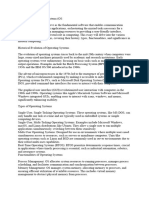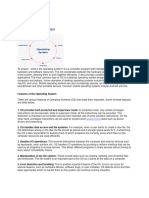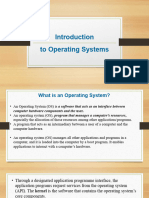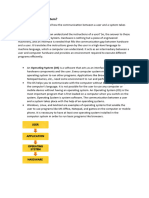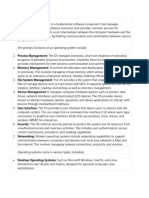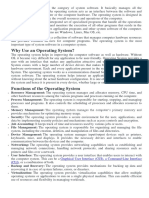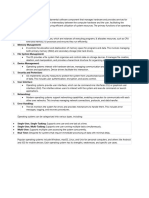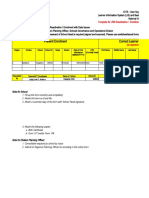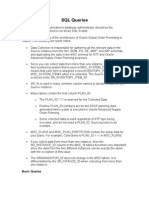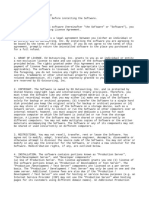0% found this document useful (0 votes)
18 views6 pagesClassification and Functions of Operating Systems
This document discusses the classification and functions of operating systems, highlighting their role as intermediaries between hardware and software. It categorizes operating systems into types such as single-user, multi-tasking, real-time, and embedded, while also detailing their key functions like process management, memory management, and user interface provision. Additionally, it addresses extended capabilities including virtualization, security, and power management, emphasizing the importance of understanding these aspects for effective system utilization.
Uploaded by
odhiambowilbrone768Copyright
© © All Rights Reserved
We take content rights seriously. If you suspect this is your content, claim it here.
Available Formats
Download as PDF, TXT or read online on Scribd
0% found this document useful (0 votes)
18 views6 pagesClassification and Functions of Operating Systems
This document discusses the classification and functions of operating systems, highlighting their role as intermediaries between hardware and software. It categorizes operating systems into types such as single-user, multi-tasking, real-time, and embedded, while also detailing their key functions like process management, memory management, and user interface provision. Additionally, it addresses extended capabilities including virtualization, security, and power management, emphasizing the importance of understanding these aspects for effective system utilization.
Uploaded by
odhiambowilbrone768Copyright
© © All Rights Reserved
We take content rights seriously. If you suspect this is your content, claim it here.
Available Formats
Download as PDF, TXT or read online on Scribd
/ 6



